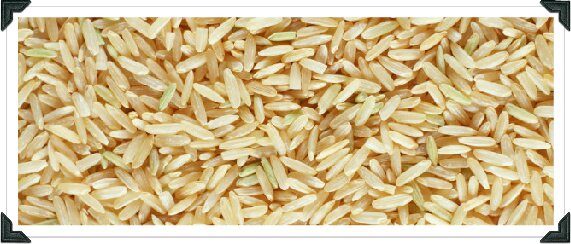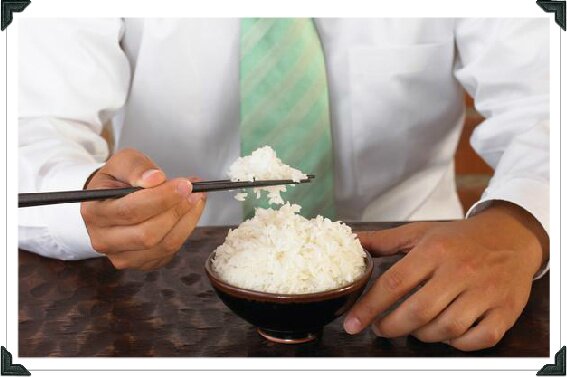Most people are not even aware that arsenic is one of the most toxic elements in the whole world. The substance is now commonly found in our food supply.
At one time, it was not so, but the persistent infiltration of our food chain by this toxic element has many health experts baffled as to how and why.
Due to worldwide pollution problems, the levels of arsenic found in foodstuff is now at historical highs. Not only is it getting worse, but the health dangers created by this substance are real.
A recent study conducted by one of the leading health organizations found very high levels of arsenic in rice. This is truly a major concern since it is one of the most widely consumed staple food worldwide.
Is it time for you to stop eating rice? Should the real risk posed by this dangerous element make you give up your favorite food? Let’s examine the details.
What exactly is Arsenic?

Most people want to know, what is Arsenic? Arsenic is a known toxic element which is denoted most commonly by the symbol As. Rarely do you find the substance on its own, for it is usually bound with many other elements one can find in chemical compounds.
Scientist have been able to divide them into two common broad categories:
Organic arsenic is usually present in plants and animal tissues.
Inorganic arsenic is mostly found in soil, rocks or dissolved in regular water. The arsenic found in water, soil or rocks are more toxic and pose the greatest health risk.
While both forms can be found in our environment, pollution problems have contributed immensely to the increased levels found in our food supply
The way rice is grown and harvested makes it the most vulnerable food staple to hold a significant amount of inorganic arsenic.
Dietary Sources Containing Arsenic

While it can be naturally found in our environment, it is the inorganic arsenic that is more toxic. This substance is present in almost all foods and drinks we consume daily, but the arsenic levels are very minuet.
Having said that, high levels of inorganic arsenic can be found in the following sources:
Drinking water that is contaminated. Access to clean water is a major problem for many of the world’s citizens, thus most are left with no option but to seek drinking water containing high levels of inorganic arsenic. Most of the drinking water available in Africa, Asia, and South America contains this deadly toxin.
Seafood Catches. Most of your seafood catches will contain some form of arsenic within them. Some seafood products like seaweed and mussels are known to contain higher levels of the most toxic form of arsenic.
Rice and other rice-based foods. It is true that the way rice is grown makes is susceptible to arsenic assimilation. More inorganic arsenic can be found in rice than any other food stuff.
Other rice-based products containing huge amounts of toxic arsenic include: Brown rice syrup, rice bran, rice milk, baby rice cereal, rice crackers, most cereal bars using rice as an active ingredient, and breakfast cereals containing rice by-products.
Why do Rice Contain Arsenic?
People that suddenly discover toxic substance exist within the staple food always ask, why is arsenic found in rice?
The white rice you’re eating in your bowl is mostly grown using fertile land and lots of water. Since arsenic can be found naturally in the soil, water and rocks, it is reasonable to expect infiltration into the rice plant.
But it is human activities that contribute immensely to the presence of inorganic arsenic found in our present day rice product. The spread of toxic arsenic in our food stuff can be traced to the human use of certain herbicides and pesticides.
Other sources include; phosphate fertilizers, wood preservatives, mining activities with all the waste, industrial waste, coal-burning, and smelting.
The pollution of the food stuff occurs when the deadly substance drains into groundwater, wells, and other water supply sources. The food stuff contamination occurs when the polluted water filled with arsenic is used for irrigation of the planted crops.
There are three main reasons for the heavy contamination of arsenic found in rice:
The marriage between arsenic and rice can be traced to the padded fields where they’re grown. The contaminated irrigated water used plays a significant role in rice and arsenic toxic elements bonding together.
The arsenic enjoys the paddy fields and accumulates to worsen the problem.
Since rice needs an abundance of water to grow properly, this staple food is known to easily absorb more arsenic into its genes than any other popular food crop.
To compound the problem, most water used for cooking is polluted with some form of arsenic.
Health Effects of Arsenic Poisoning in Humans
In moderate quantity, arsenic will pose no significant health problem, but the reverse is the case when you consume foods containing high doses of the toxic form of arsenic.
It can cause many adverse symptoms, which can sometimes even lead to death. If you constantly consume food staples like rice loaded with inorganic arsenic, various health problems and some chronic diseases will start to manifest.
Constant consumption of foods laced with inorganic arsenic can lead to:
Different types of cancer
Makes you more susceptible to vascular disease, due to the blockage or narrowing of the blood vessels.
Makes you more prone to getting high blood pressure including hypertension.
The substance stimulates heart disease of various kinds.
Expect type 2 diabetes to come calling in due time from eating foods containing inorganic arsenic.
Based on the results of numerous studies, the toxicity of arsenic will negatively affect nerve cells, including brand functions.
It is also well known that pregnant women consuming foods containing arsenic will pass on some of the problems to the baby in the womb. Some birth defects and hindering the proper growth of various vital organs has been traced to the toxicity of the substance.
Can the Arsenic in Rice be reduced?
There are certain steps you can take to reduce the presence of the toxic element in the food staple. Best to wash your rice thoroughly and cook it using clean water that is free from inorganic arsenic substance.

This is true for both your white and brown rice, since proper washing and cooking will reduce the arsenic content by at least 55%.
On the other hand, if your cooking water is contaminated with significant amount of arsenic poisoning, it will raise the presence of the substance in your food staple significantly.
Based on research, the following steps can help you reduce the amount of arsenic found in your white or brown rice:
It is advisable you wash your rice thoroughly before cooking it. Also use plenty of water when cooking your rice.
It is true that brown rice contains more arsenic elements that white rice. So for the heavy rice consumers, the white variety might be a better choice to reduce the amount of the toxin you ingest.
Jasmine or basmati are forms of aromatic rice, and most have lower levels of inorganic arsenic elements.
While some would advise you avoid eating rice grown from certain countries, regions or seasons, in this global economy it is virtually impossible to determine the source unless you grow it yourself.
Try your best to diversify the types of food you eat on a daily basis. It might be wise to limit your rice consumption to only once or twice a week.
The key step to controlling the amount of arsenic you consume is to eat other natural foods, instead of just rice on a daily basis.
While the arsenic in foods we eat is real, the ones found in rice is even more poisonous if consumed in large quantities.
Latest posts by admin (see all)
- 7 Top First Aid Kits You Should Have at Home or Office - April 4, 2016
- Should You Invest in a GPS Watch for Running - April 2, 2016
- If You Have Kids This Bicycle Trailers Reviews Will Thrill You - March 30, 2016
